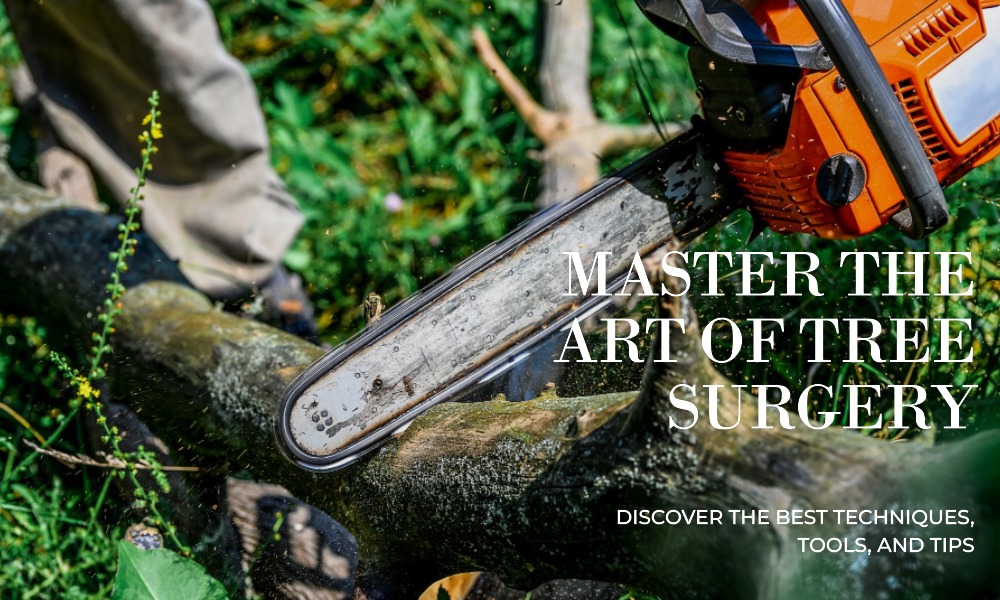When it comes to the care and maintenance of the trees on your property, the services of a skilled tree surgeon are invaluable. Tree surgery involves a range of techniques and practises aimed at ensuring the health and well-being of trees while also addressing any safety concerns. In this comprehensive guide, we'll explore the world of tree surgery, covering the essential techniques, tools, and tips that every homeowner should know. Whether you're looking to hire a tree surgeon or want to tackle some tree maintenance yourself, this guide will help you understand the ins and outs of tree surgery.
Understanding the Basics of Tree Surgery
Tree Surgery Defined: Tree surgery in Glasgow is a specialised field that focuses on the care and maintenance of trees. It encompasses various services like tree removal, tree reduction, tree pruning, and tree trimming, each designed to address specific tree-related issues.
When to Call a Tree Surgeon: If you have a tree that is diseased, dead, dangerously positioned, or in need of professional care, it's time to consult a certified tree surgeon. They can assess the situation and recommend the appropriate course of action.
Tree Surgery Techniques
Tree Removal:
Tree removal is often the last resort, but it's sometimes necessary for safety or aesthetic reasons. A qualified tree surgeon will ensure the tree is taken down safely and efficiently.
Tree Reduction:
Tree reduction involves reducing the overall size of a tree without necessarily removing it. This is done to improve light penetration, reduce wind resistance, and maintain a tree's health.
Tree Pruning:
Pruning is the selective removal of branches to improve a tree's structure, promote growth, and remove dead or diseased branches. It's essential for overall tree health.
Tree Trimming:
Tree trimming is the process of cutting back the tree's canopy to maintain its shape and size. It's done to prevent overgrowth and maintain safety.
Tools of the Trade
To perform these techniques, tree surgeons rely on an array of specialised tools:
Chainsaw: An essential tool for tree surgery, chainsaws come in various sizes and types, each suited for specific tasks.
Loppers: Loppers are used for pruning and trimming smaller branches.
Pole Pruner: Ideal for cutting branches that are difficult to reach, pole pruners extend your reach safely.
Climbing Equipment: Tree surgeons often need to climb trees, and proper climbing gear ensures their safety.
Safety Gear: Helmets, goggles, and protective clothing are crucial for a tree surgeon's safety.
Tips for Successful Tree Surgery
Hire a Qualified Tree Surgeon: When in doubt, consult a certified arborist or tree surgeon. They have the expertise and experience to assess your tree's needs.
Prune in the Right Season: Different tree species have different pruning seasons. Ensure you prune your trees at the right time to promote healthy growth.
Safety First: Safety is paramount in tree surgery.
Proper Disposal: After tree removal, ensure proper disposal of the tree debris and consider recycling or repurposing wood.
Regular Maintenance: Consistent tree maintenance, including pruning and trimming, will keep your trees healthy and reduce the need for drastic measures like removal.
Conclusion
Tree surgery is a crucial aspect of maintaining the health, beauty, and safety of your trees. Whether you're seeking tree removal, reduction, pruning, or trimming, it's vital to understand the techniques, tools, and tips associated with the practise. By hiring a certified tree surgeon or taking on these tasks with the right knowledge and equipment, you can ensure that your trees thrive for years to come. If you need professional tree services, consult a qualified tree surgeon who can provide expert care tailored to your specific needs.

.jfif)



